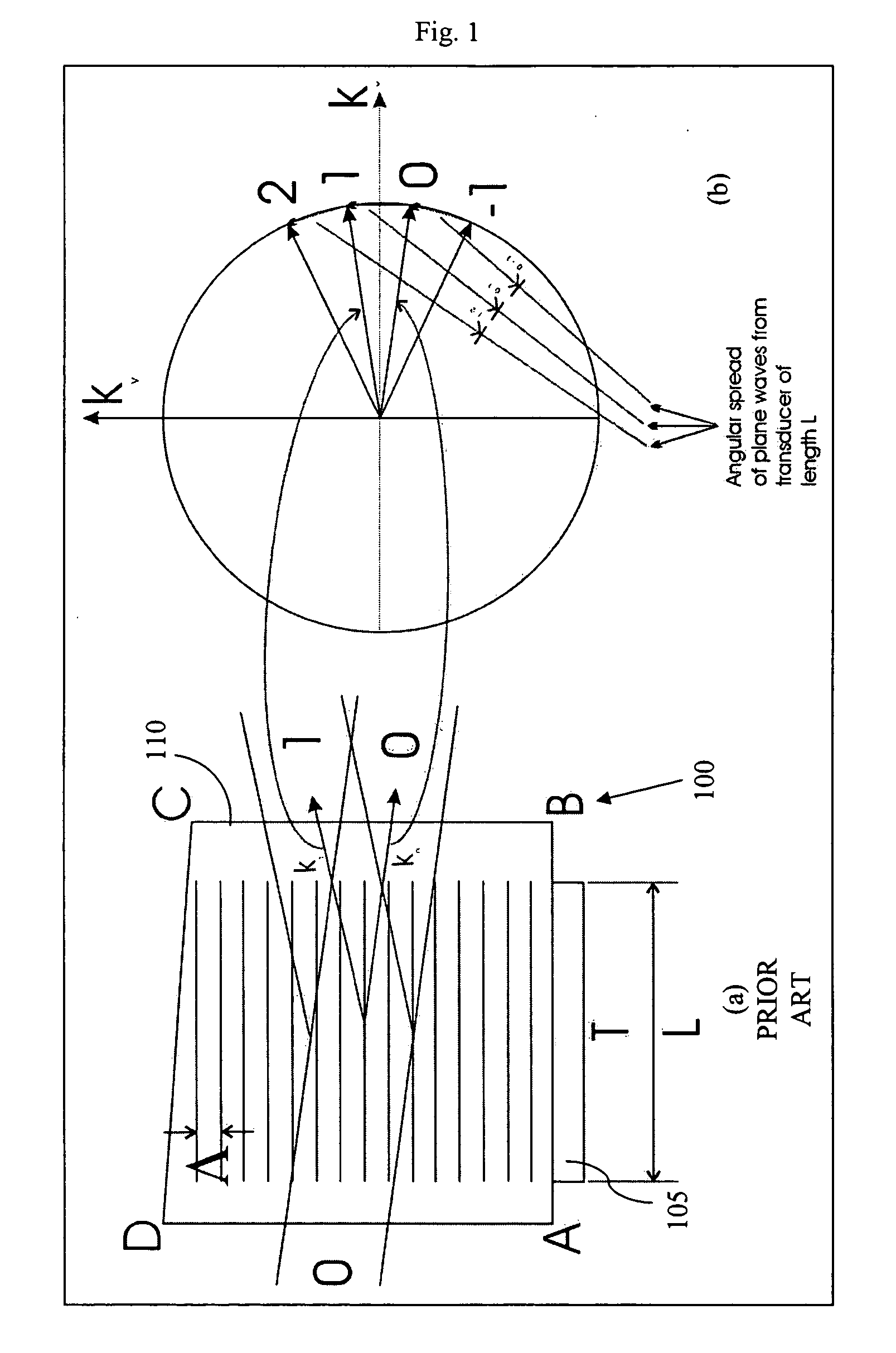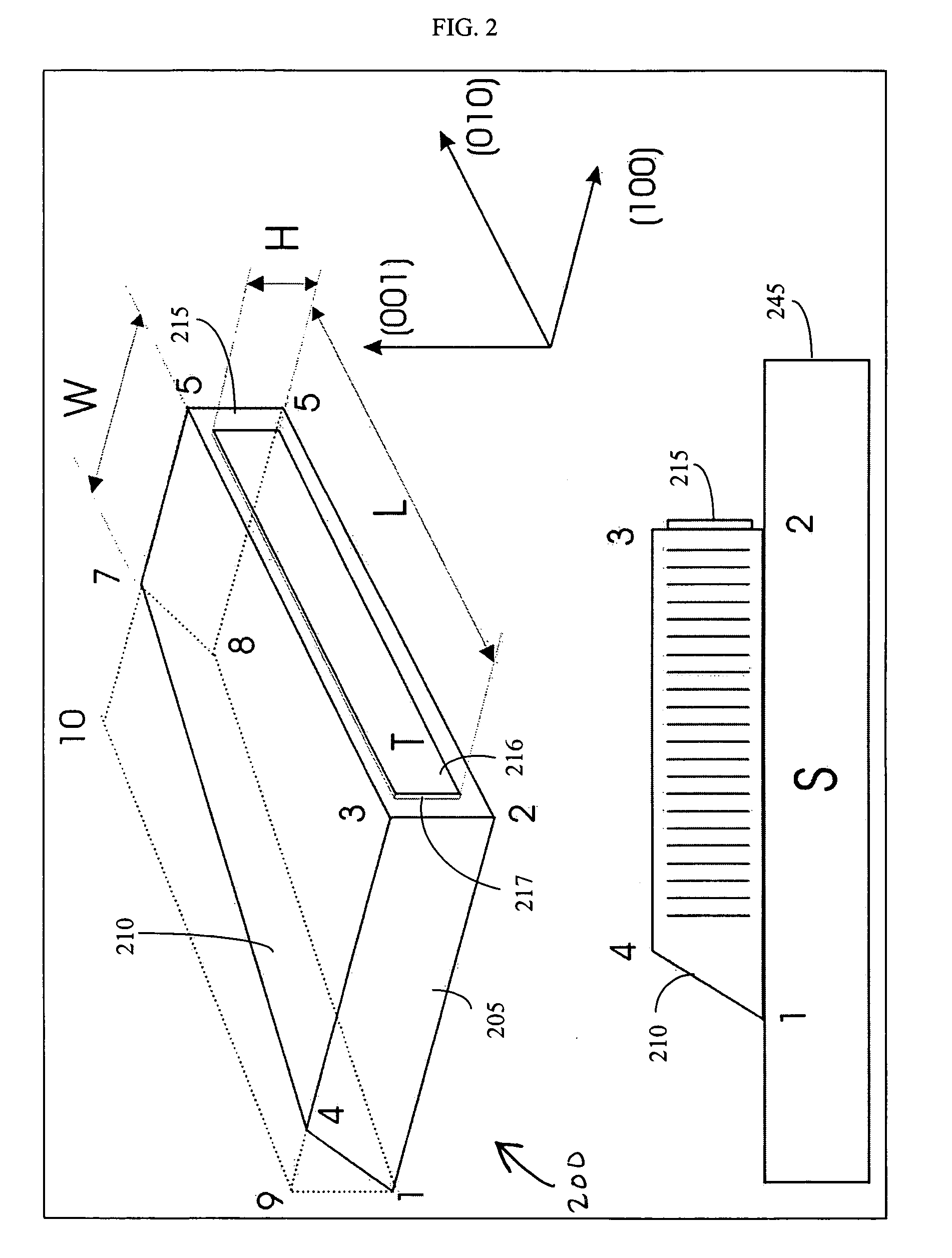Silicon acousto-optic modulator
a modulator and optical technology, applied in optics, laser details, instruments, etc., can solve the problems of vibration and/or reliability problems, slow mechanical q-switches, and long rise and fall times of pulses generated via this approach
- Summary
- Abstract
- Description
- Claims
- Application Information
AI Technical Summary
Problems solved by technology
Method used
Image
Examples
Embodiment Construction
[0027]An acousto-optic modulator comprises a single crystal silicon acousto-optic interaction medium, and at least one transducer for emitting an acoustic wave attached to the silicon crystal. The transducer has a first electrode layer disposed on one side of its sides and a second electrode layer disposed on the other side. Single-crystalline silicon is an anisotropic material. The silicon used with the invention is (100), (010) or (001) silicon. The transducer is aligned to the silicon crystal so that the direction of acoustic propagation in the silicon crystal is along the (100), (010) or (001) direction of the silicon crystal. The Inventors have unexpectedly discovered that modulators based on (100), (010) or (001) silicon provide modulators having small footprint modulators which are operable at significantly lower RF power levels, while providing high longitudinal acoustic velocity, as compared to available AO modulators.
[0028]Silicon is a face centered cubic crystal. In case ...
PUM
| Property | Measurement | Unit |
|---|---|---|
| peak power | aaaaa | aaaaa |
| electrical | aaaaa | aaaaa |
| optical loss | aaaaa | aaaaa |
Abstract
Description
Claims
Application Information
 Login to View More
Login to View More - R&D
- Intellectual Property
- Life Sciences
- Materials
- Tech Scout
- Unparalleled Data Quality
- Higher Quality Content
- 60% Fewer Hallucinations
Browse by: Latest US Patents, China's latest patents, Technical Efficacy Thesaurus, Application Domain, Technology Topic, Popular Technical Reports.
© 2025 PatSnap. All rights reserved.Legal|Privacy policy|Modern Slavery Act Transparency Statement|Sitemap|About US| Contact US: help@patsnap.com



